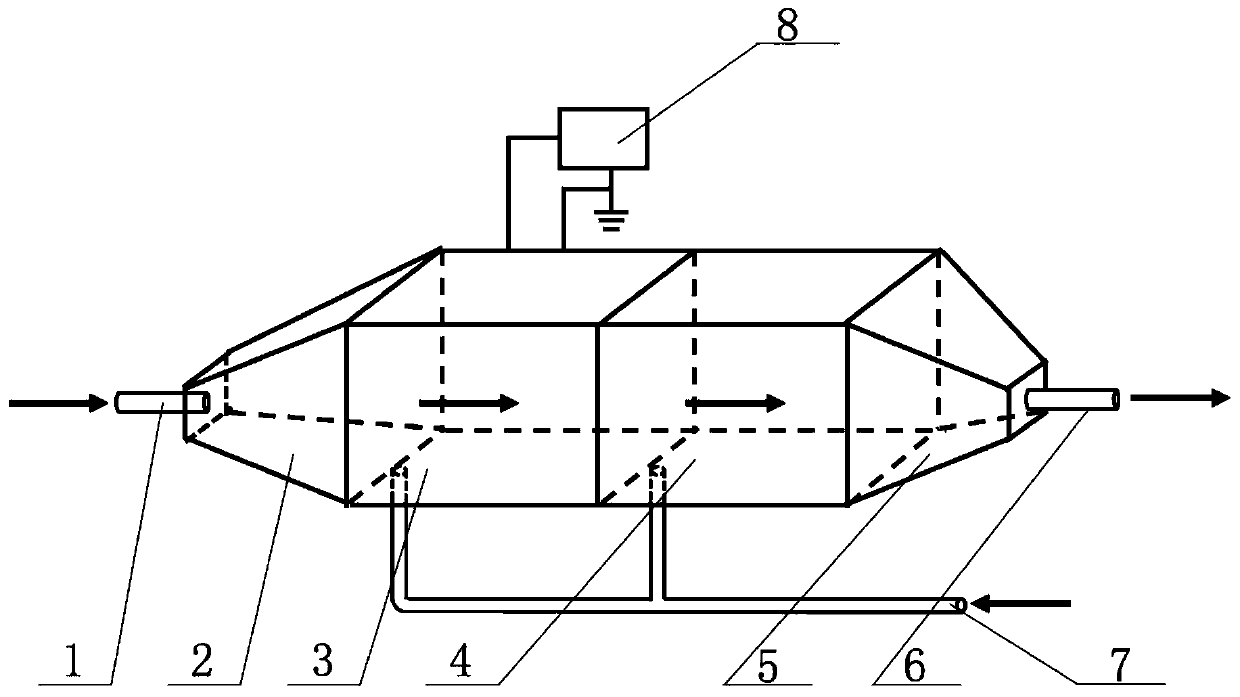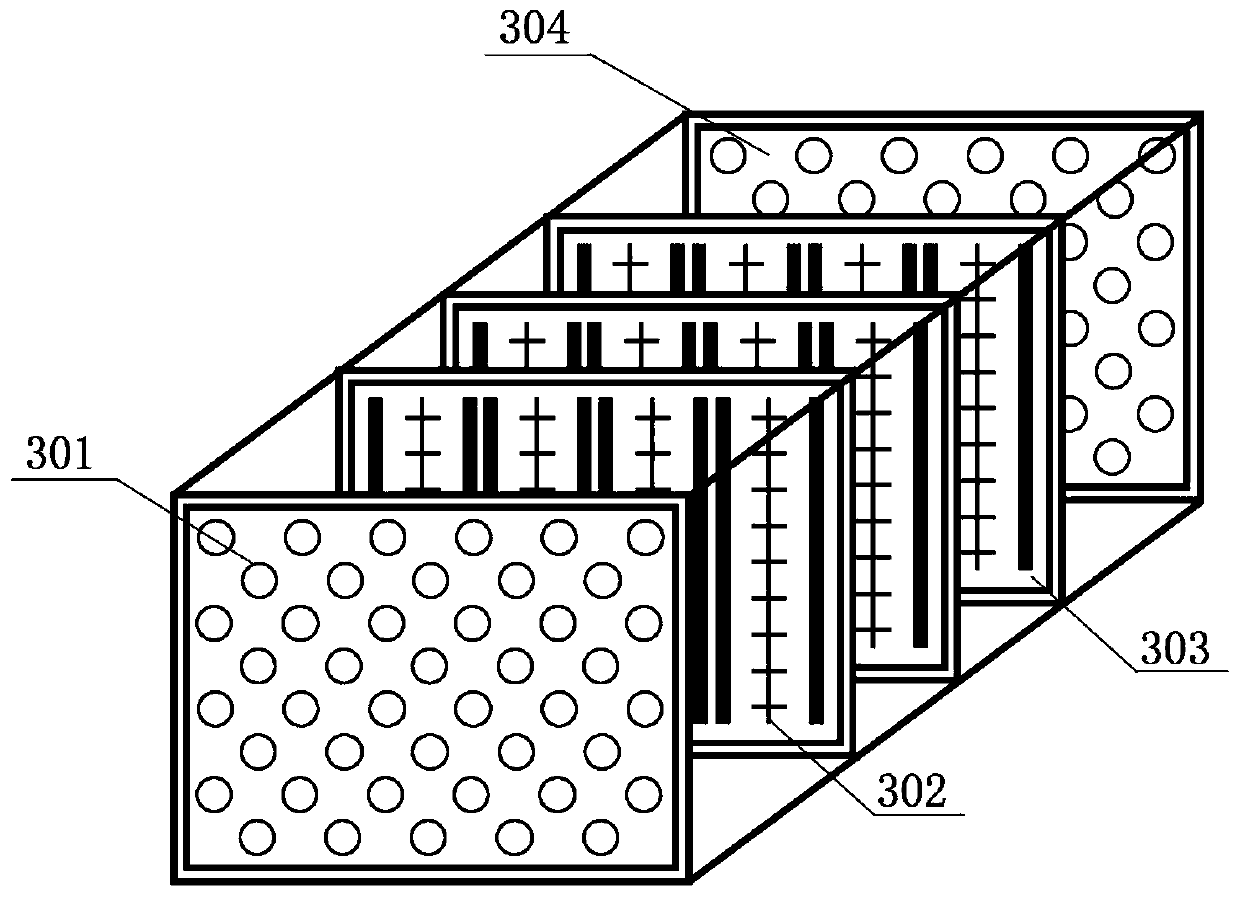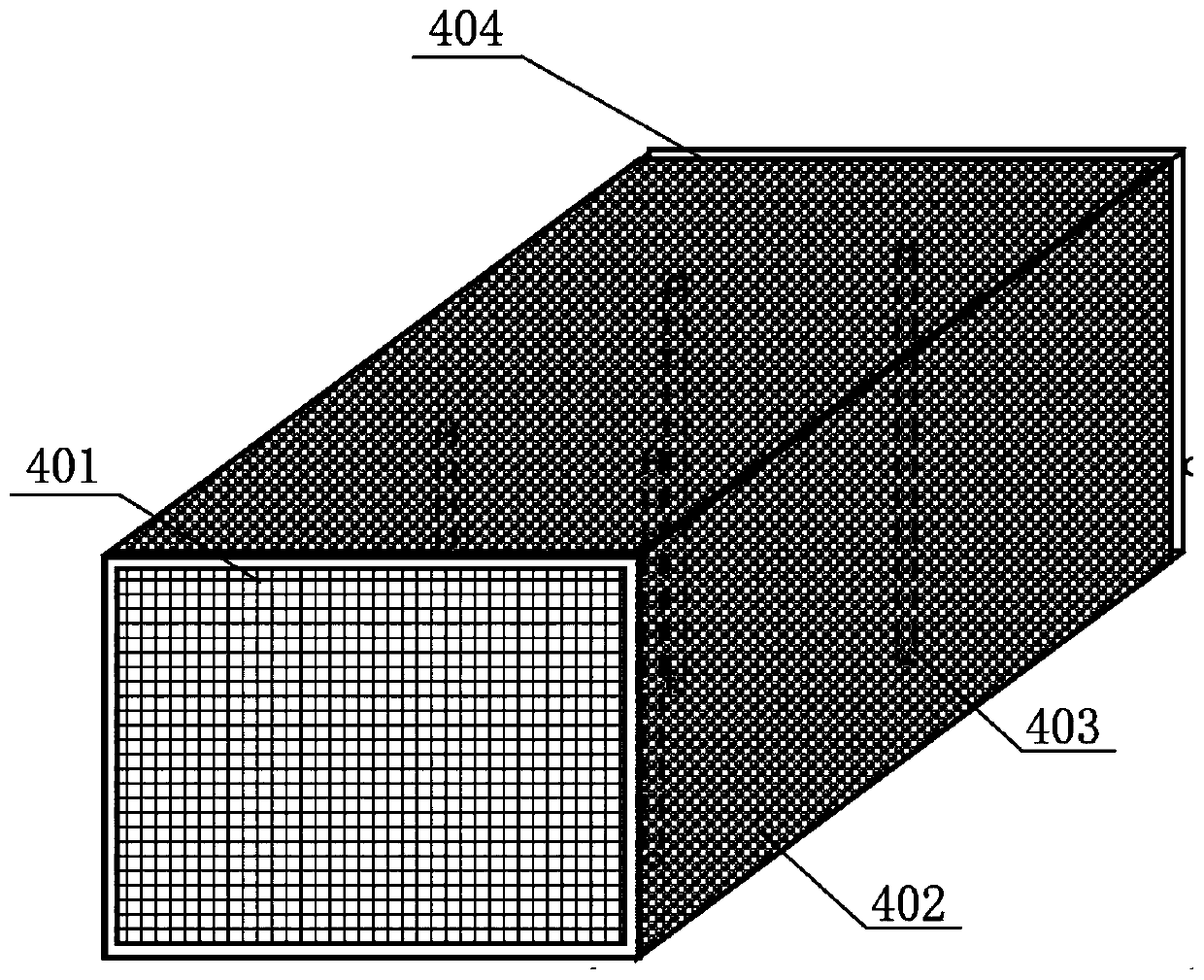Method and device for decomposing dioxin in incineration flue gas by low-temperature plasma coupling catalysis
A technology of low-temperature plasma and incineration of flue gas, applied in separation methods, chemical instruments and methods, gas treatment, etc., can solve the problems of not reducing the total amount of dioxins, high catalytic light-off temperature, and lack of engineering demonstrations, etc., to achieve High difficulty in removal, improved oxygen storage performance, and the effect of avoiding secondary pollution
- Summary
- Abstract
- Description
- Claims
- Application Information
AI Technical Summary
Problems solved by technology
Method used
Image
Examples
Embodiment 1
[0060] Such as figure 1 As shown, this embodiment provides a device for removing dioxins in waste incineration flue gas by using the coupling effect of low-temperature plasma and catalyst, including an air inlet pipe 1, an air inlet 2, a low-temperature plasma reaction unit 3, a catalytic Reaction unit 4, gas outlet 5, gas outlet pipe 6, clean gas / regeneration gas inlet pipe 7 and high voltage power supply 8. waste incineration flue gas from figure 1 The air inlet pipe 1 and air inlet 2 on the middle left enter the purification device and enter the low-temperature plasma reaction unit 3. Under the action of a high-voltage electric field, the strong oxidizing particles produced by the high-voltage discharge of the low-temperature plasma reaction unit will partially oxidize dioxins. The voltage waveform of the high-voltage power supply 8 is a DC high-voltage power supply or a DC superimposed high-frequency pulse power supply. The positive DC voltage is adjustable within the ran...
Embodiment 2
[0064] The discharge electrode 302 of the low-temperature plasma reaction unit of this embodiment adopts a stainless steel sawtooth wire, and the high-voltage power supply 8 is connected to a positive DC high-voltage power supply, and the discharge voltage is +11kV. The clean gas intake pipe 7 is not opened during the discharge process. Catalyst 402 uses γ-alumina and titanium dioxide as carriers, vanadium pentoxide, platinum oxide, and tungsten oxide as active components, and a mixture of iron oxide, manganese oxide, and cerium oxide as active additives; wherein: the carrier contains γ - the proportion of alumina is 40wt%, the proportion of titanium dioxide is 60wt%, the loading of vanadium in the active component is 1.5wt%, the loading of platinum is 0.5wt%, and the loading of tungsten is 2wt%; The loading amount of the agent is 0.5wt%. Based on this configuration, the flue gas of a domestic waste incinerator is introduced for treatment, and the volume of flue gas to be tre...
Embodiment 3
[0067] The discharge electrode 302 of the low-temperature plasma reaction unit of this embodiment adopts a stainless steel barbed wire, and the high-voltage power supply 8 is connected to a negative DC high-voltage power supply, and the discharge voltage is -13kV. The clean gas intake pipe 7 is not opened during the discharge process. Catalyst 402 uses γ-alumina and titanium dioxide as carriers, vanadium pentoxide, platinum oxide, and tungsten oxide as active components, and a mixture of iron oxide, manganese oxide, and cerium oxide as active additives; wherein: the carrier contains γ - the proportion of alumina is 50wt%, the proportion of titanium dioxide is 50wt%, the loading of vanadium in the active component is 1.5wt%, the loading of platinum is 0.5wt%, and the loading of tungsten is 2wt%; The loading amount of the agent is 0.5wt%. Based on this configuration, the flue gas of a domestic waste incinerator is introduced for treatment, and the volume of flue gas to be treat...
PUM
| Property | Measurement | Unit |
|---|---|---|
| oxidation rate | aaaaa | aaaaa |
Abstract
Description
Claims
Application Information
 Login to View More
Login to View More - R&D
- Intellectual Property
- Life Sciences
- Materials
- Tech Scout
- Unparalleled Data Quality
- Higher Quality Content
- 60% Fewer Hallucinations
Browse by: Latest US Patents, China's latest patents, Technical Efficacy Thesaurus, Application Domain, Technology Topic, Popular Technical Reports.
© 2025 PatSnap. All rights reserved.Legal|Privacy policy|Modern Slavery Act Transparency Statement|Sitemap|About US| Contact US: help@patsnap.com



